Magnetic Properties Of Materials
The magnetic properties of materials play a crucial role in various aspects of our daily lives, and they often go unnoticed. From the refrigerator magnets that hold up family photos to the powerful electromagnets in MRI machines, understanding these properties is fundamental. Materials can be classified based on their magnetic behaviour into diamagnetic, paramagnetic, ferromagnetic, antiferromagnetic, and ferrimagnetic types. Each type has unique characteristics that determine its interaction with magnetic fields. For instance, the ferromagnetic properties of iron make it indispensable in constructing electric motors and transformers. Similarly, the paramagnetic nature of certain materials finds applications in electronic devices and medical diagnostics. By studying the magnetic properties of materials, we can develop more efficient technologies and enhance our understanding of the physical world around us.
This Story also Contains
- What is a Diamagnetic Substances?
- What are Paramagnetic Substances?
- What are Ferromagnetic Substances?
- Solved Examples Based on Magnetic Properties of Materials
- Summary
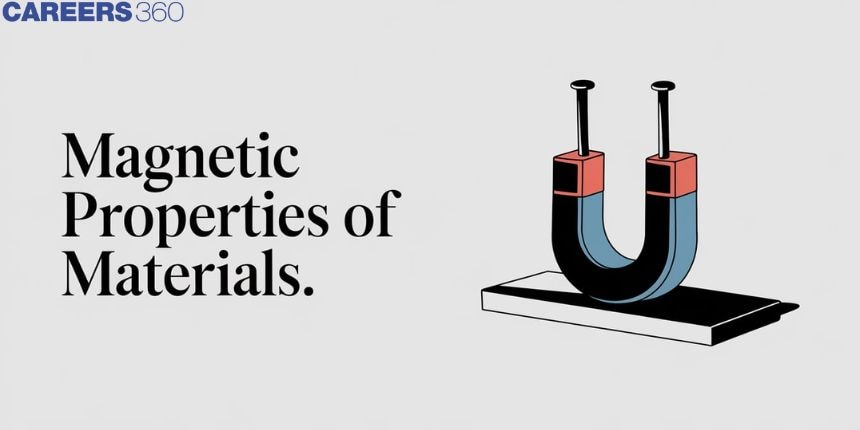
Depending on the magnetic properties, the magnetic materials are classified as
- Diamagnetic substance
- Paramagnetic substance
- Ferromagnetic substance
What is a Diamagnetic Substances?
A diamagnetic substance is a material that exhibits a weak repulsion from a magnetic field. Diamagnetic substances are found in many everyday materials, and their properties are utilized in various applications, such as magnetic levitation experiments and certain types of magnetic shielding. The substance is feebly magnetized in a direction opposite to that of the magnetizing field in which those are placed bismuth, copper, lead, silicon, etc are diamagnetic substances.
Magnetization(M) vs. the Magnetic Intensity (H) Curve
The Magnetization (M) versus Magnetic Intensity (H) curve, also known as the magnetization curve or hysteresis loop, depicts the relationship between the magnetization of a material and the applied magnetic field intensity. This relationship is fundamental in understanding the magnetic properties of different materials. Here's a brief explanation of the key features of this curve:

Magnetic moment (m) for diamagnetic substances is Very low or nearly 0.
The cause of magnetism for Diamagnetic substances is the Orbital motion of electrons.
Diamagnetic substances are those which have a tendency to move from the stronger to the weaker part of the external magnetic field.
The magnetic field lines are expelled by these substances.
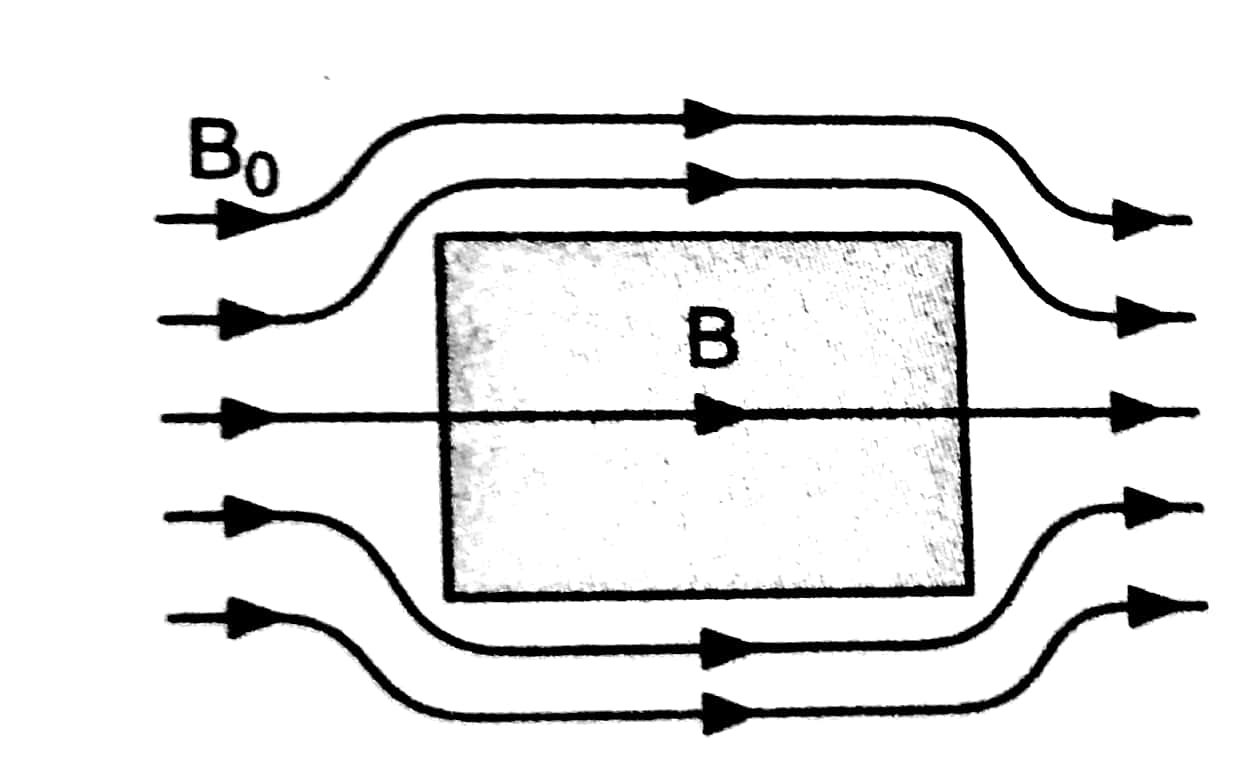
Behavior in a non-uniform magnetic field In diamagnetic substance
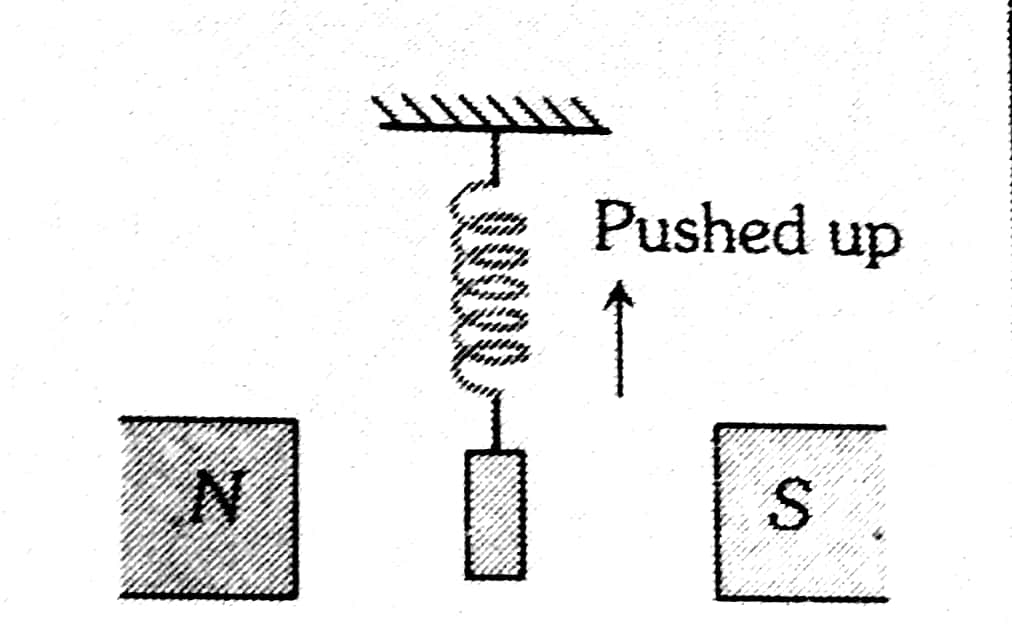
I.e These are repelled in an external magnetic field.
What are Paramagnetic Substances?
Paramagnetic substances are materials that exhibit a weak attraction to an external magnetic field and do not retain any magnetization once the external field is removed. Paramagnetic substances are an important class of materials in both fundamental research and practical applications, providing insights into the behaviour of electrons and the interactions between magnetic fields and matter. Paramagnetic substances are those which get weakly magnetized when placed in an external magnetic field.
Magnetization(M) vs. the Magnetic Intensity (H) Curve

They have a tendency to move from a region of a weak magnetic field to a strong magnetic field.
i.e., they get weakly attracted to a magnet.
Cause of magnetism-Spin motion of electrons
The magnetic moment (m) for Paramagnetic substances is Very low.
Behavior in a non-uniform magnetic field In Paramagnetic substance
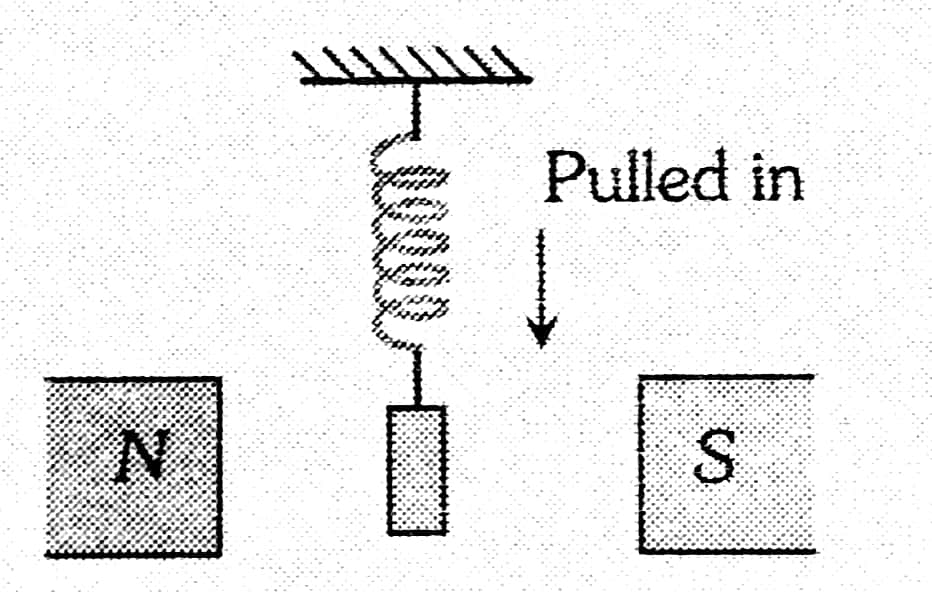
i.e. These are feebly attracted in an external magnetic field.
What are Ferromagnetic Substances?
Ferromagnetic substances are materials that exhibit strong attraction to magnetic fields and can retain their magnetization even after the external magnetic field is removed. Ferromagnetic substances are essential in many technological applications, from everyday household items like refrigerator magnets to advanced scientific instruments and industrial machinery. Their ability to maintain strong, stable magnetization makes them invaluable in numerous fields.
The substance is strongly magnetized in the direction of the magnetizing field in which they are placed.
Iron, cobalt, nickel, gadolinium, and a number of alloys are ferromagnetic in nature.
Magnetization(M) vs. the Magnetic Intensity (H) Curve

The cause of magnetism is the Formation of domains.
Magnetic moment (m) for ferromagnetic substances is Very high.
They have a strong tendency to move from a region of weak magnetic field to a strong magnetic field.
Magnetic field lines tend to crowd into a ferromagnetic substance.
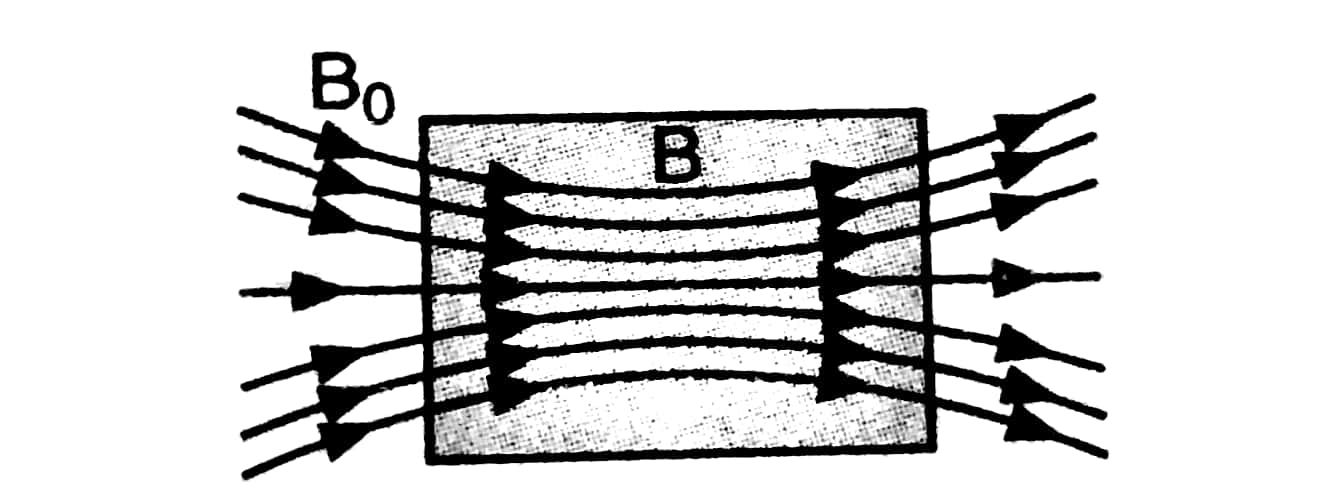
Behavior in a non-uniform magnetic field In ferromagnetic substance
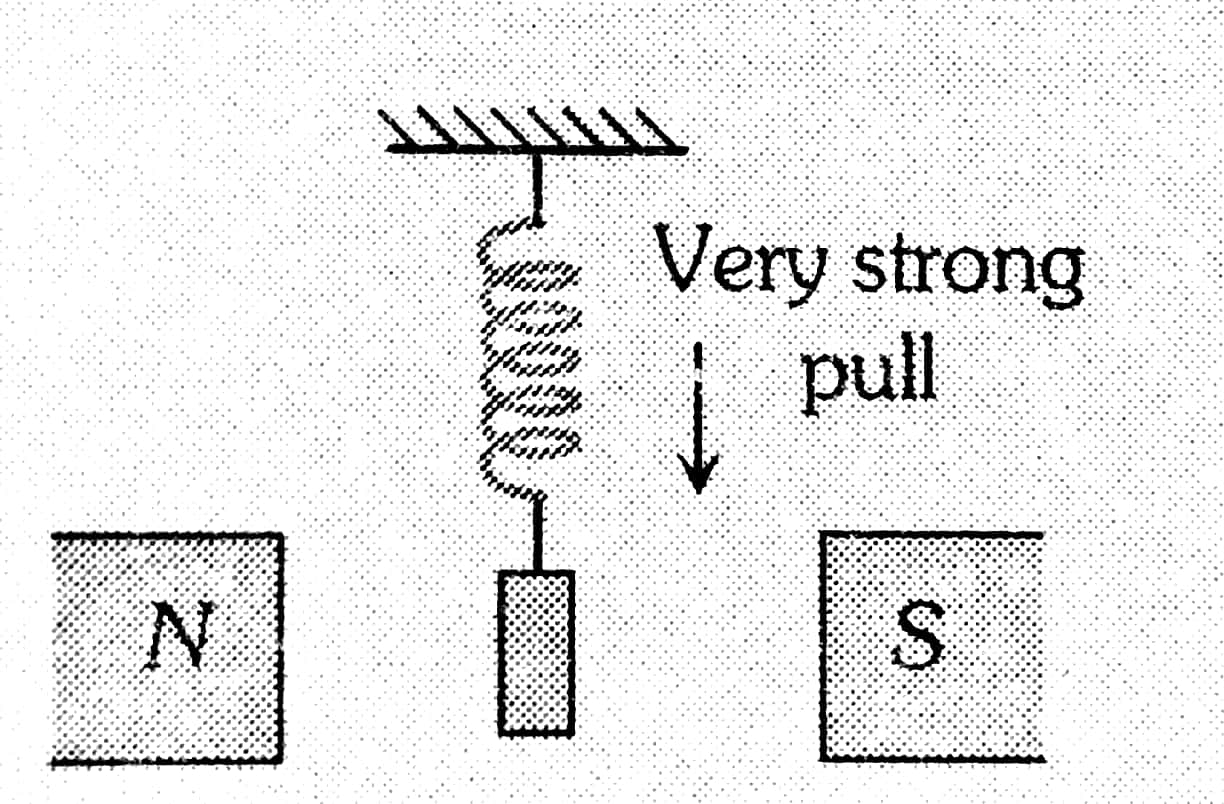
I.e These are strongly attracted in an external magnetic field
Curie Temperature or Curie Point
The Curie temperature, or Curie point, is a critical temperature for ferromagnetic materials, above which they lose their permanent magnetic properties and become paramagnetic
It is the temperature above which increasing the temperature the susceptibility of ferromagnetic materials decreases.
i.e At a temperature above the Curie Point, a ferromagnetic becomes an ordinary Paramagnetic
It is denoted by Tc.
Curie-Weiss curve
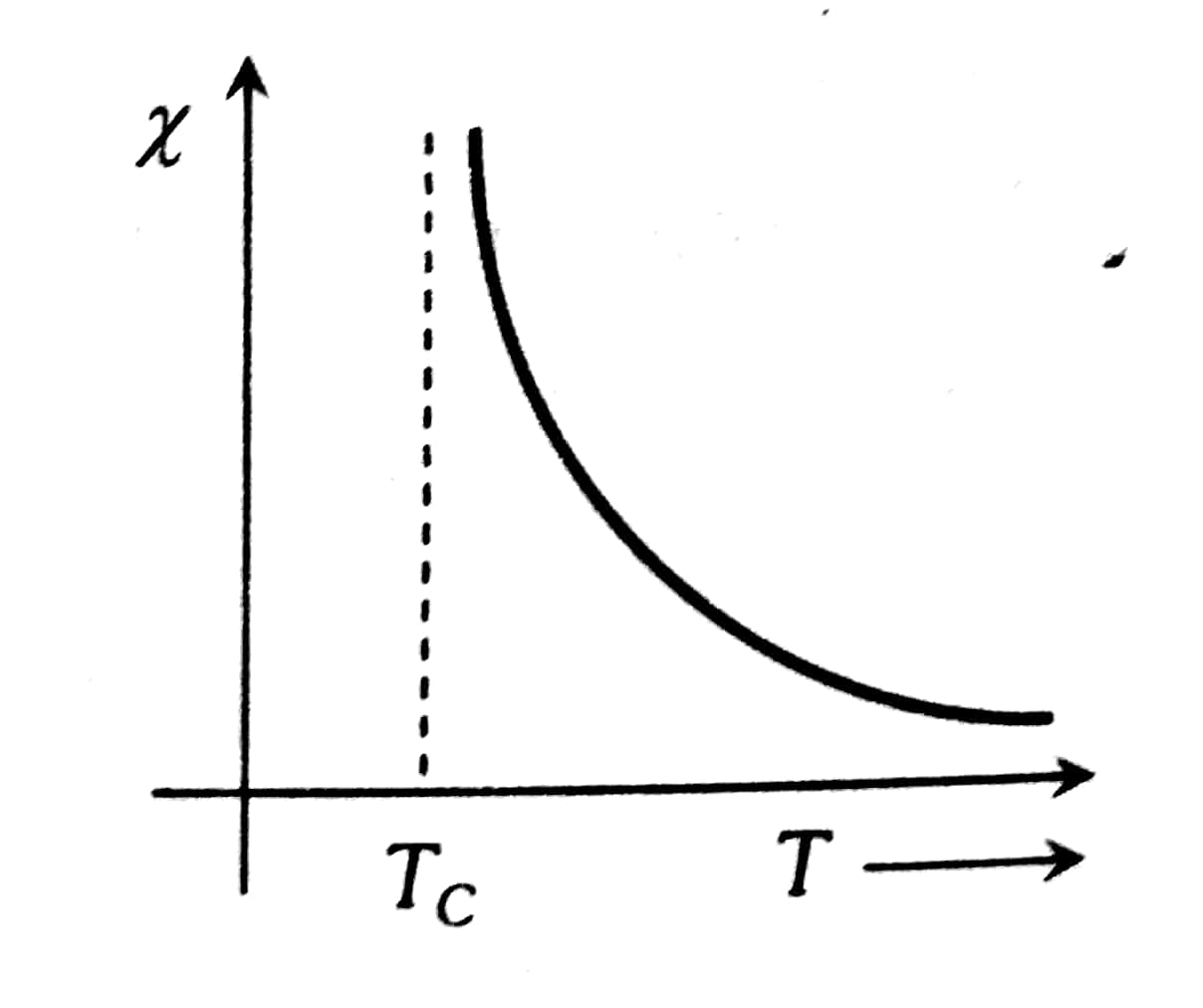
From the above curve, we can say that (For $\mathrm{T}>\mathrm{T}_{\mathrm{c}}$ ) $\chi_{\mathrm{m}} \propto \frac{1}{\mathrm{~T}-\mathrm{T}_{\mathrm{c}} \text { or }} \chi_{\mathrm{m}}=\frac{\mathrm{C}}{\mathrm{T}-\mathrm{T}_{\mathrm{c}}}$ where C is some constant.
Recommended Topic Video
Solved Examples Based on Magnetic Properties of Materials
Example 1: Which of the following statements is correct?
A. Electric monopoles do not exist whereas magnetic monopoles exist.
B. Magnetic field lines due to a solenoid at its end and outside cannot be completely straight and confined.
C. Magnetic field lines are completely confined within a toroid.
D. Magnetic field lines inside a bar magnet are not parallel.
E. x =-1 is the condition for a perfect diamagnetic material, where x is its magnetic susceptibility.
Choose the correct answer from the options given below
1) B and D only
2) A and B only
3) C and E only
4) B and C only
Solution:
Statement (C) is correct because the magnetic field outside the toroid is zero and they form closed loops inside the toroid itself.
Statement (E) is correct because we know that super-conductors are materials inside which the net magnetic field is always zero and they are perfectly diamagnetic.
For superconductors.
$
\begin{aligned}
& \mu_r=1+\chi \\
& \chi=-1 \\
& \mu_r=0
\end{aligned}
$
Hence, the answer is the option (3).
Example 2: Given below are two statements
Statement I: Susceptibilities of paramagnetic and ferromagnetic substances increase with a decrease in temperature.
Statement-II: Diamagnetic is a result of orbital motions of electrons developing magnetic moments opposite given below.
Choose the correct answer from the options given below
1) Both Statement - I and Statement - II are true.
2) Both Statement - I and Statement - II are false.
3) Statement - I is true but Statement - II is false.
4) Statement - I is false but Statement - II is true.
Solution:
For paramagnetic substances,
$\chi \propto \frac{1}{\mathrm{~T}}$
For ferromagnetic substances,
$\chi \propto \frac{1}{\mathrm{~T}-\mathrm{T}_{\mathrm{c}}}$
$\mathrm{T_{c}\rightarrow }$ curie temperature
Statement I is false but Statement II is true.
Hence, the answer is the option (4).
Example 3: The susceptibility of a paramagnetic material is 99. The permeability of the material in $\mathrm{Wb} / \mathrm{A}-\mathrm{m}$, is :
( Permeability of free space $\mu_0=4 \pi \times 10^{-7} \mathrm{~Wb} / \mathrm{A}-\mathrm{m}$ )
1) $4 \pi \times 10^{-7}$
2) $4 \pi \times 10^{-4}$
3) $4 \pi \times 10^{-5}$
4) $4 \pi \times 10^{-6}$
Solution:
$\begin{aligned} \mu_{\mathrm{r}} & =1+\lambda \quad \lambda \rightarrow \text { susceptibility } \\ \frac{\mu}{\mu_0} & =1+99 \quad \mu_{\mathrm{r}} \rightarrow \text { relatine permeability } \\ \mu & =100 \times \mu_{\mathrm{o}}=100 \times 4 \pi \times 10^7 \\ & =4 \pi \times 10^{-5}\end{aligned}$
Hence, the answer is the option (3).
Example 4: The space inside a straight current-carrying solenoid is filled with a magnetic material having magnetic susceptibility equal to $1.2 \times 10^{-5}$. What is the fractional increase in the magnetic field inside the solenoid with respect to air as a medium inside the solenoid?
1) $1.2 \times 10^{-5}$
2) $1.2 \times 10^{-3}$
3) $1.8 \times 10^{-3}$
4) $2.4 \times 10^{-5}$
Solution:
$
\begin{aligned}
& \vec{B}_1=\mu_0 \eta i[\text { without materiel }] \\
& \vec{B}_2=\mu n i[\text { with material }] \\
& \text { and } \mu=\mu_0(1+\lambda) \\
& \lambda \rightarrow \text { susceptibility }
\end{aligned}
$
So fractional increase
$
1.2 \times 10^{-5}
$
Hence, the answer is the option (1).
Example 5: Statement I: The ferromagnetic property depends on temperature. At high temperatures, ferromagnet becomes paramagnet.
Statement II: At high temperatures, the domain wall area of a ferromagnetic substance increases.
In the light of the above statements, choose the most appropriate answer from the options given below :
1) Statement I is true but Statement II is false.
2) Both Statement I and Statement II are true.
3) Both Statement I and Statement II are false.
4) Statement I is false but Statement II is true.
Solution:
As temperature increases, domains disintegrate so ferromagnetism decreases and above curie temperature it becomes paramagnet.
Also, at high temperatures, the domain area of ferromagnetic substances decreases.
Hence, the answer is the option (1).
Summary
Magnetic materials are classified into diamagnetic, paramagnetic, and ferromagnetic substances, each with unique interactions with magnetic fields. Diamagnetic substances exhibit weak repulsion, paramagnetic substances show weak attraction, and ferromagnetic substances have strong attraction and retain magnetization. Understanding these properties aids in developing technologies like MRI machines and transformers, and helps solve problems in magnetic applications, such as predicting material behavior and designing efficient devices.